Discover the Enchanting Sounds and Stories of Uttarakhand’s Musical Heritage
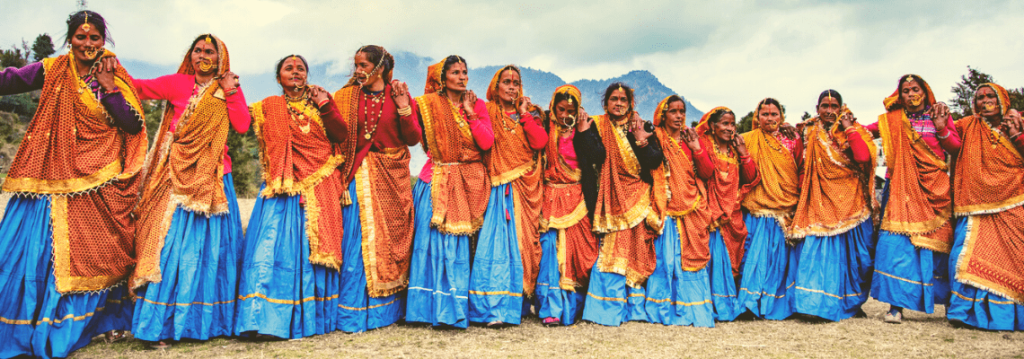
My early mornings in Kumaon were often accompanied by the melancholy tones of pahadi songs and prayers in the chilly mountain air. As my siblings and I were getting ready for school, our father would always turn on the radio or play cassettes featuring our region’s rich musical tradition. These songs were initially just a nice background to our everyday lives, as recognizable and reassuring as the aroma of freshly made paratha escaping from the kitchen or the far-off cry of birds greeting the day. We lived in a small city also known as the gateway of Kumaon, which is a destination for most of the villages who want to earn well and make the lives of their family good. Songs used to change with the seasons and festivals, each having a distinct flavor. With spring, our home would resound with rollicking Phag music about the colors of Holi.
As children, we didn’t fully grasp the depth of meaning behind these songs. We would hum along, picking up phrases and melodies, our young voices joining the seasoned singers on the recordings. Little did we know that these morning rituals were slowly but surely embedding the essence of Kumaoni culture deep within our hearts. Winter was approaching, and the marriage season was getting nearer; hence jagar songs of joy, which invoked God’s good wishes upon newlyweds, became something like our day and night background score. I understood the true meaning of culture and tradition when I moved out for college, I learned that is so important to preserve your traditions and always stay connected to your roots.
The Unfolding Music of Folk Wisdom
As we grew older, the simple enjoyment of these songs began to transform into something deeper. The lyrics that once washed over us started to take on new meanings. We began to understand that these weren’t just songs – they were the living, breathing history of our people, passed down through generations. I recall the day when I suddenly understood a particular phrase from a Jagar song. It discussed the sacred relationship between humanity and nature, describing mountains as topographical features and living entities worthy of respect and devotion. This insight enlightened me to the great ecological wisdom hidden in our traditional traditions. Every song taught me something, I came to understand—lessons about nature, history, and the principles that had upheld our communities for generations. If you want to know more about tradition then read this: https://theaspectratio.in/mountain-village-memories-my-surprising-return-after-20-years/
Jagar: Songs of the Spirits

One of Uttarakhand’s most essential musical traditions is Jagar, a spirit invocation form. This old ritualistic music was particularly used to invoke local deities and ancestral spirits for their benefit or to solve the problems of the community in general. The Jagar songs are sung with a group of people known as Jagaris, singing along with instruments like dhol, damau, and hurka. The performance is a strong blend of telling stories as interlaced with songs to create a transcendental experience for the audience. Tales sung during Jagar are ripe with mythology, recounting heroic deeds of gods and goddesses, and keeping the spiritual beliefs alive within the community. The Jagar was not just a performance; it was a spiritual journey, a connection to the past, and a testament to the enduring power of faith and tradition.
Hudka Bol: The Pulse of Daily Life

Hudka Bol is another quite alienating regional musical form that flourishes in Kumaon. Their performance revolves around the hudka, a traditional hand drum. It is characterized by fast beats and rhythmic patterns. Sung in festivals, marriages, and other celebrations, the songs render scenes from everyday, social issues, and myths and thereby evoke unity along with a feeling of collective identity amongst the people. The simplicity and raw energy that is Hudka Bol reflect an unpretentious and vibrant people—that is Kumaon. The simplicity of the music, combined with its infectious energy, brought people together in a way that few other things could. It is a celebration of community, of shared experiences, and of the simple joys of life in the hills.
Chholiya Dance: A Martial Symphony
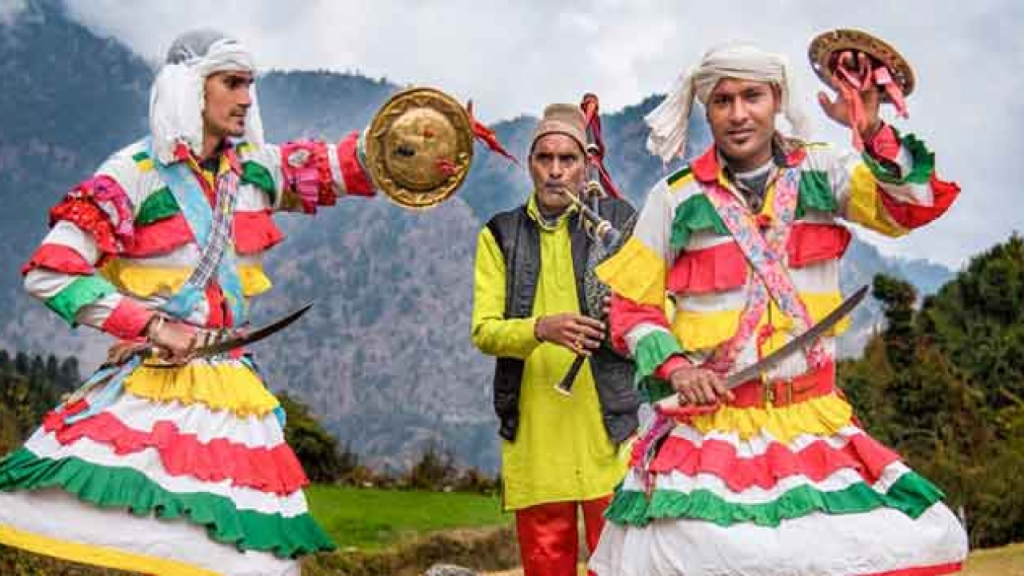
Chholiya dance, with its background in martial arts, is a pleasure to watch. I witnessed this dance during a local-level fair when the village was in a festive mood with great enthusiasm and eagerness. In their attires like traditional warriors, wearing swords and shields, they moved gracefully and precisely, depicting years of rigorous training and discipline. The music, dominated by the strong beats of the dhol and haunting notes of the ransingha, made for an exciting backdrop to the dance. Watching all the dancers executing intricate routines, leaping, and spinning with their weapons, it was easy to imagine how ancient warriors must have defended Uttarakhand and their honor. Chholiya dance is much more than a performance; it serves as a living reminder of the rich martial heritage of this region and the indomitable spirit of the people. It was originally a part of wedding processions, symbolizing the protection of the bride and groom, Chholiya has evolved into a vibrant cultural expression. The music and dance together narrate stories of valor and honor, echoing the martial history of the hill warriors.
Carrying the Torch Forward
Today, as I look back on those childhood mornings filled with music, I’m filled with gratitude for the cultural foundation they provided. What started as a simple part of our daily routine has blossomed into a lifelong journey of discovery and preservation. I’ve come to understand that folk music isn’t a relic of the past – it’s a living, breathing art form that continues to evolve while staying true to its roots. It’s up to our generation to ensure that the melodies that greeted us each morning continue to ring out across the valleys of Kumaon. Know More – https://www.euttaranchal.com/culture/folk-songs-and-dances-of-uttarakhand.php
Be it through community singing sessions, helping in the cause of local musicians, or just sharing these songs with our children, each one of us has a role to play in keeping this tradition alive. For in these songs lie not only our history but also the wisdom that shall guide us into the future—a future where timeless values of community, respect for nature, and cultural pride continue amid the shadow of the mighty Himalayas.

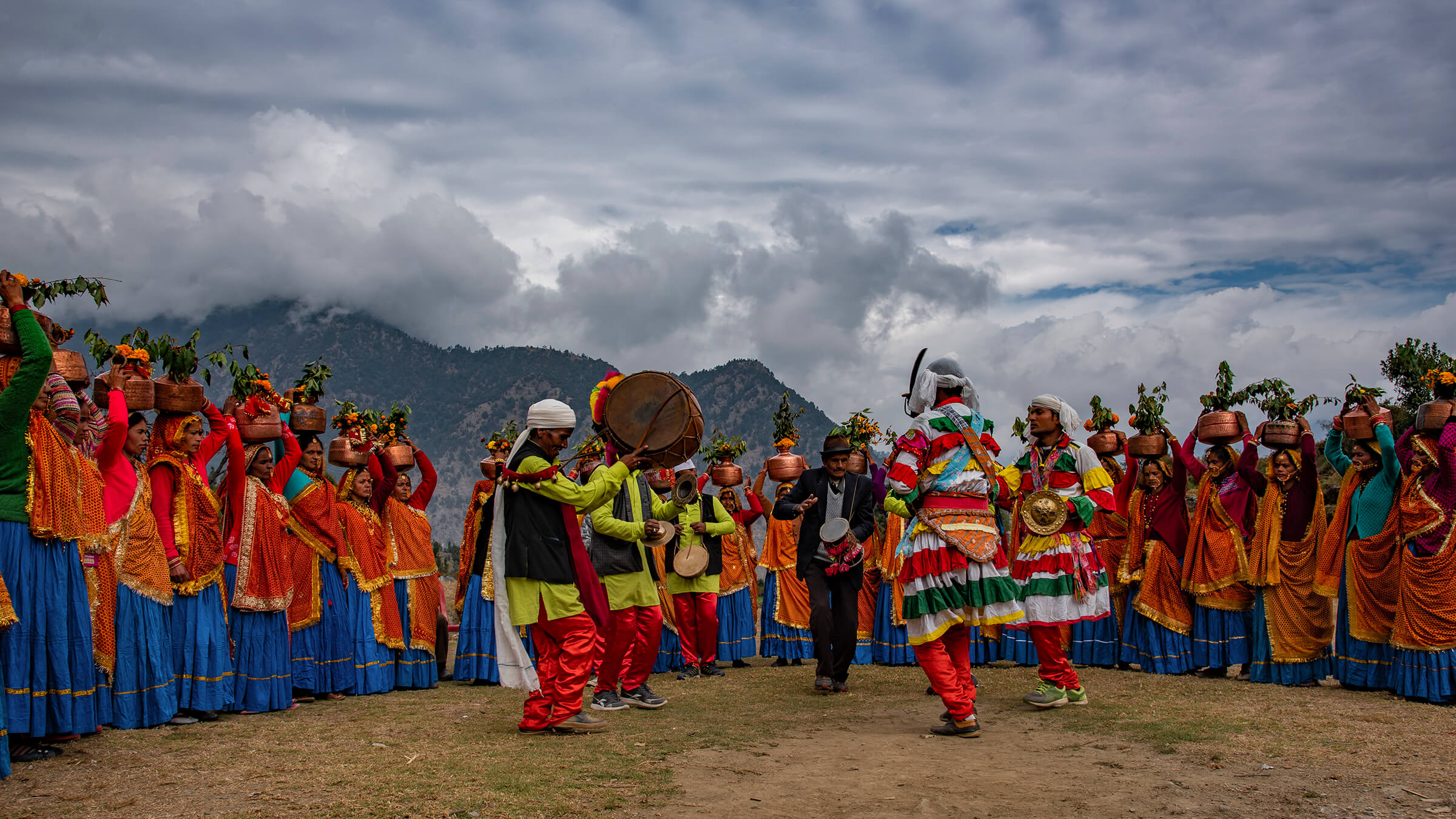
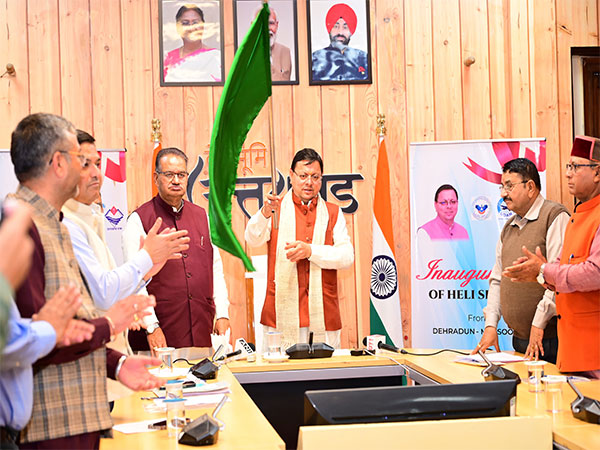
 By
By
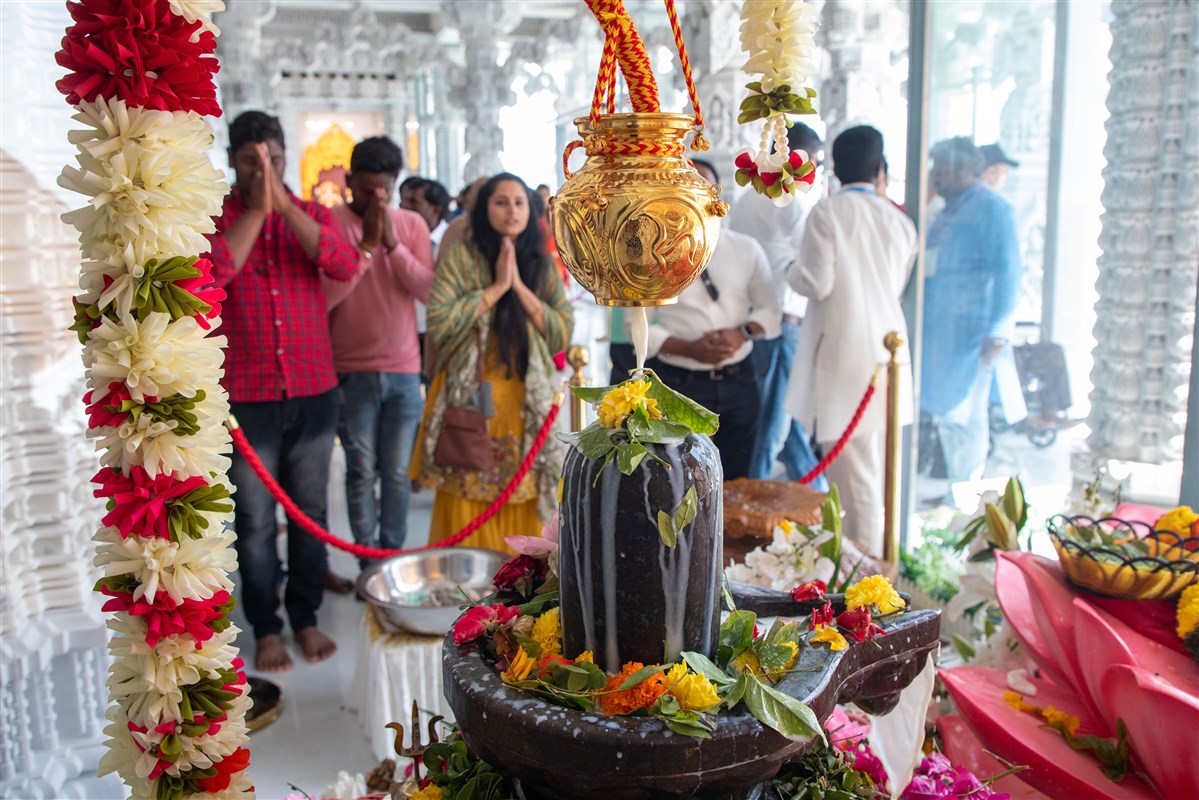
 By
By






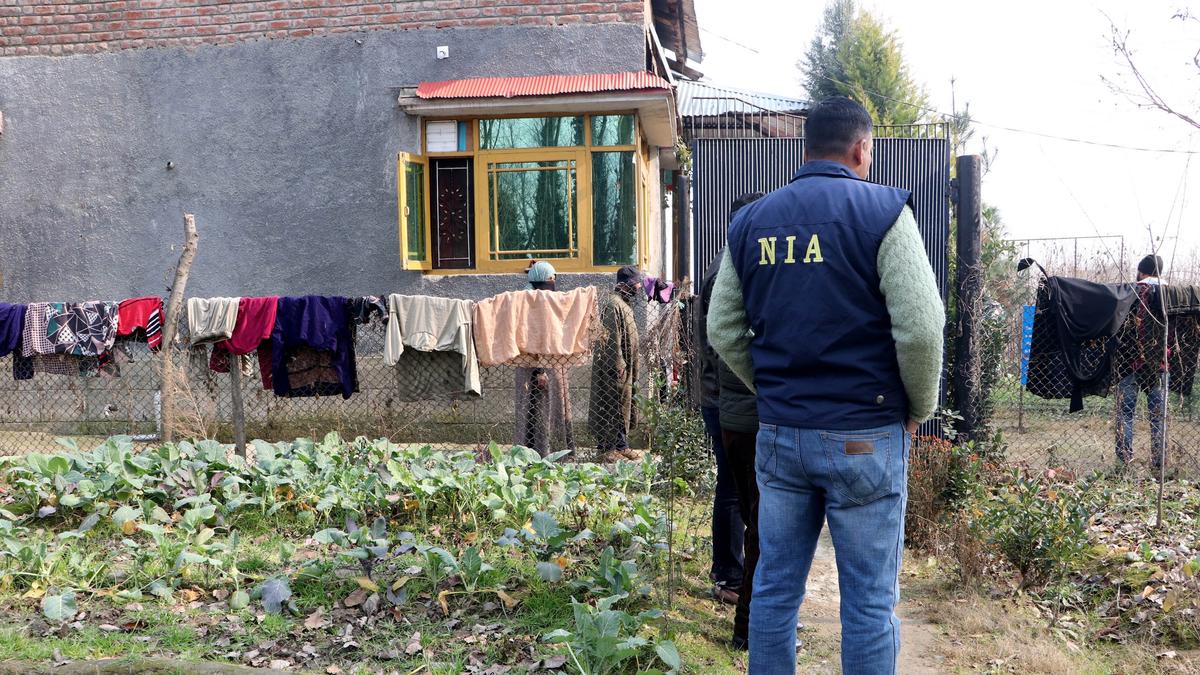

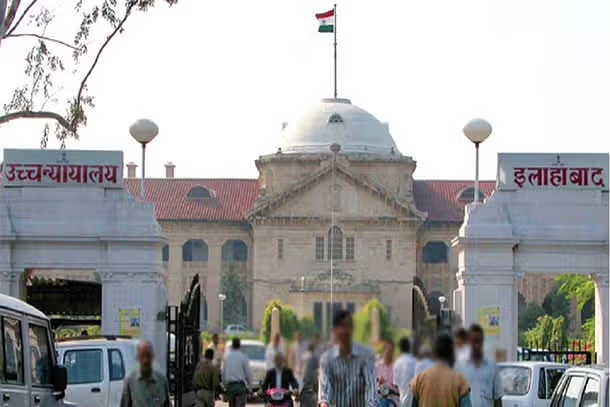
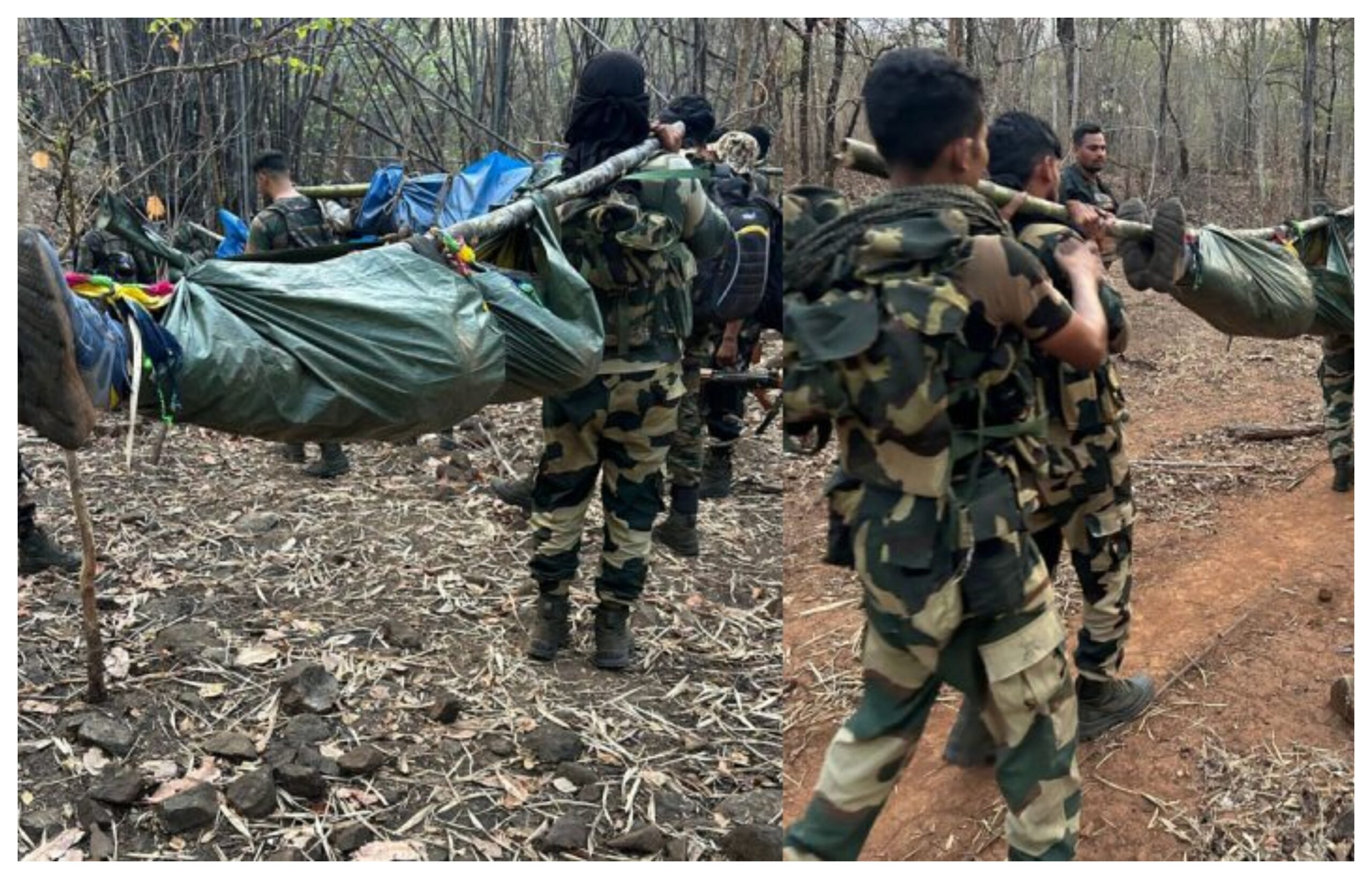



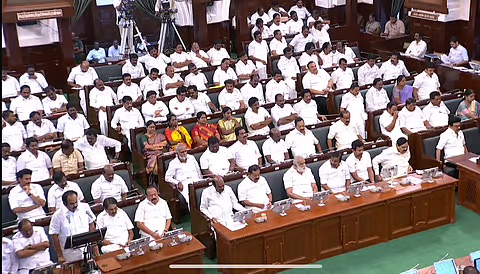
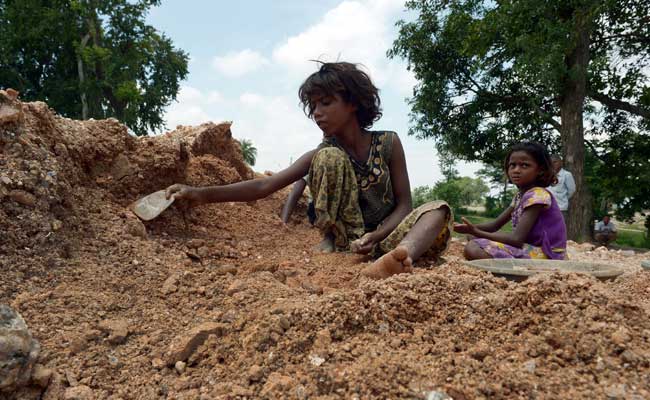


After reading this I want to come to UK and wanna enjoy their folk culture 🫶🏻